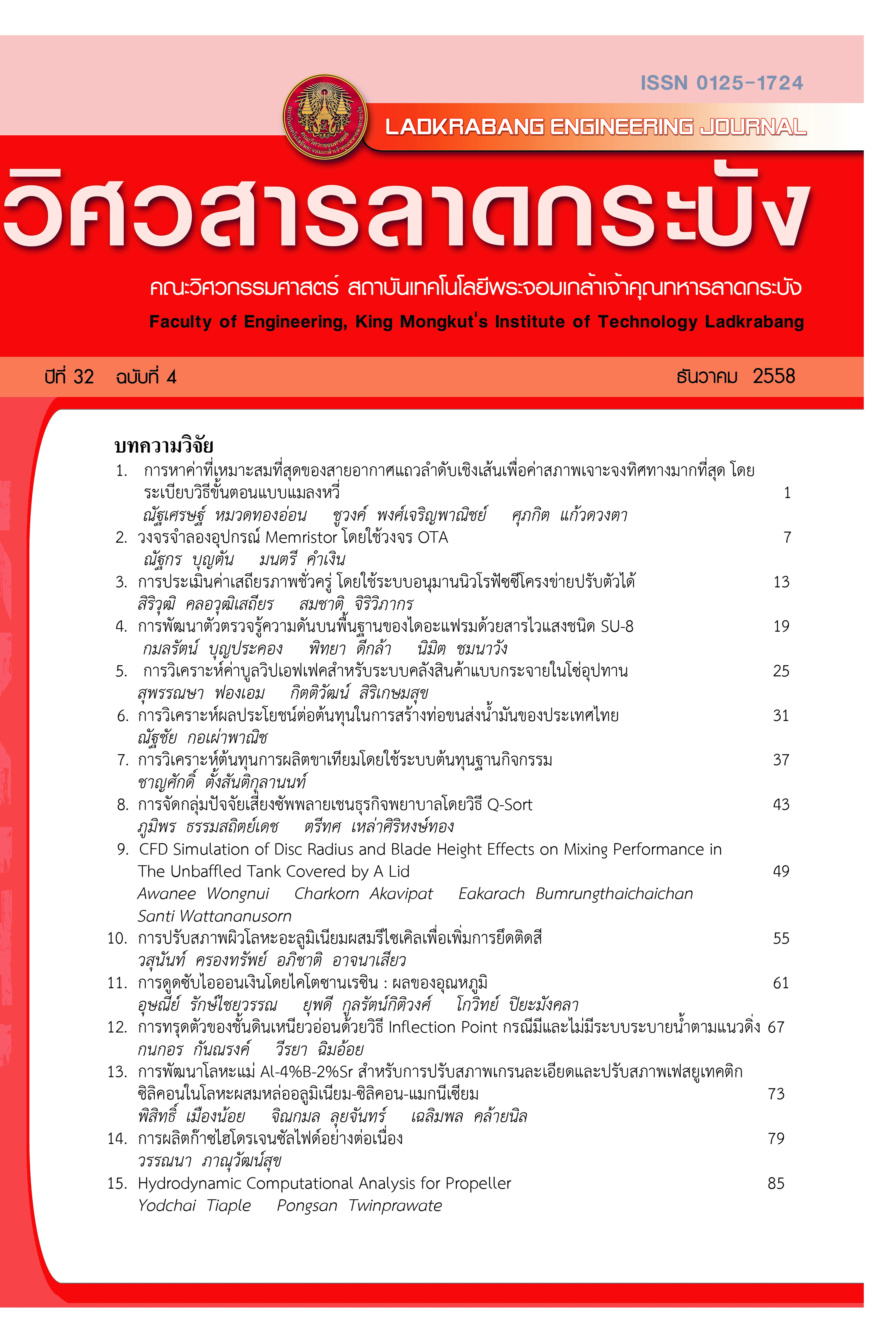Continuous Production of Hydrogen Sulfide Gas
Keywords:
hydrogen sulfide,, continuous production,, laboratory tableAbstract
This research was to design the experimental set using for continuously producing hydrogen sulfide gas. It was relied on the reaction between sodium sulfide and sulfuric acid. The production process was a fed-batch type by adding sodium sulfide solution at the concentration of 9 mg/mL into a synthesized bottle containing distilled water and sulfuric acid. The solution was added by injecting with syringe at 0.5 mL for every 40 sec and feeding with peristaltic pump at the rate of 0.75 mL/min. The result was found that hydrogen sulfide gas could be produced at the approximate concentration of 200 ppm starting from 88 sec to 12,651 sec (3 h 30 min 51 sec) with syringe injection and starting from 76 sec to 12,683 sec (3 h 31 min 23 sec) with peristaltic pump feeding. The experiment was operated on the laboratory table by treatment the effluent gas with sodium hydroxide solution at the concentration of 8 %.
References
[2] G. Moussavi, K. Naddafi, A. Mesdaghinia and M. A. Deshusses, “The removal of H2S from process air by diffusion into activated sludge,” Environmental Technology, Vol.28, pp. 987-993, 2007.
[3] A. Gangagni Rao, P. Ravichandra and A. Jetty, “Operation of biofilter with mixed agricultural residue as filter material: Effect of humidification and inlet hydrogen sulfide volume fraction on the performance,” Chemical and Biochemical Engineering, Vol.20, No.2, pp. 189-196, 2006.
[4] J. F. Paulino and J. C. Afonso, “New strategies for treatment and reuse of spent sulfide caustic stream from petroleum industry,” Quimica Nova, Vol.35, No.7, pp. 1447- 1452, 2012.
Downloads
Published
How to Cite
Issue
Section
License
The published articles are copyrighted by the School of Engineering, King Mongkut's Institute of Technology Ladkrabang.
The statements contained in each article in this academic journal are the personal opinions of each author and are not related to King Mongkut's Institute of Technology Ladkrabang and other faculty members in the institute.
Responsibility for all elements of each article belongs to each author; If there are any mistakes, each author is solely responsible for his own articles.






